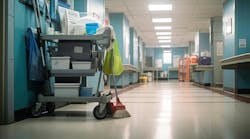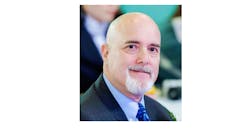Schools and universities understand the importance of cleaning and rely heavily on their vendors to accomplish the tasks necessary to protect student and staff health, as well as the buildings themselves. This relationship has proven extremely successful; the cleaning industry is composed of amazing companies, many of whom are recognized as global leaders. These truly “good” companies are valued by their customers, treat their employees with respect and pay them equitably. They are conscientious about their communities and the broader environment and excel financially so they will be around for years to come.
The “good” companies may represent 99% of the industry, but as the adage goes, “It only takes one rotten apple to spoil the barrel.” Thus, the challenge faced by schools and universities is that it is often hard to distinguish the “good” from the “bad” apples.
It is especially challenging when “bad” isn’t simply one that obviously violates the law or appears on an OSHA Safety Data Sheet. Green certifications may address product and service-related health and environmental impacts, but when every vendor has certified products and services, purchasers are looking even deeper as they try to differentiate among prospective offerings.
“Bad” companies
Green cleaning has become a major part of the global cleaning industry. Today, hundreds of companies with thousands of products have been certified to the green standards from the likes of EPA’s Safer Choice program, Green Seal and Underwriters Laboratories. It is the assurance from these certifiers that in fact qualify these products or services as being “authentically” green. They help address the issue of greenwashing—when some “bad apples” make false, misleading, or unsubstantiated claims about their products.
But now that green cleaning products have become so widely available, purchasers are starting to think more deeply about the fundamental reasons they want green products or services in the first place. These purchasers now may be wondering if a certified Green product or service can truly be “authentic” if it is made by a “bad” company?
What purchasers want to know
School and university purchasers increasingly want to know more about the suppliers’ own efforts relative to sustainability and ESG (environment, social and governance) issues to better align their supply chain with their values and to minimize risk to their reputations. For example, purchasers want enough information to determine if a green product or service:
- Uses slave, child or forced labor when making products or when mining or harvesting raw materials. Unfortunately, this happens far too often, especially when materials are made or extracted in developing countries.
- Discriminates against workers by race, religion, gender, age, sexual orientation, or disabilities. These practices can be found anywhere from the hiring and treatment of frontline workers to senior managers and ownership itself.
- Uses unfair labor practices such as hiring workers as independent contractors or paying workers cash under the table. Regrettably, illegal contracting is far too common.
- Pollutes air and drinking water or otherwise harms the environment because of the inefficient use of resources such as energy (including fuels) and water, and poor handling of waste.
So back to the original question: Can authentic green products and services be made, distributed or otherwise provided by “bad” companies? The answer unfortunately appears to be “yes,” but as more information is made available to school and university purchasers this may change for the better for education institutions, as well as the entire cleaning industry, especially the “good” companies that are trying to do the right thing.


